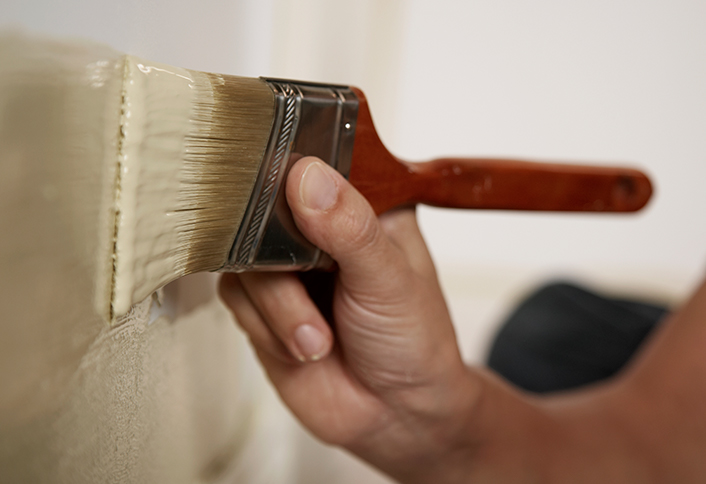So You Think You Can Paint
 Learn How the Professional Marlton Painters are doing it
Learn How the Professional Marlton Painters are doing it
So you’ve prepared for your paint job by purchasing the best equipment possible, but are you prepared to use it, and get the best finish possible? We are here to share the best techniques to make your paint job look like it was done by a pro.
The first step in any paint job begins with loading paint onto the brush. You can either retrieve paint from the paint can or pour paint into a painting pail. Whichever method you decide, we’re here to guide you. First, dip the brush directly into the paint up to 1/3 of the length of the bristles. This stops the brush from being overloaded with paint and prevents dripping. Tap both sides of the brush lightly against the side of the can or pail. This loads the paint more on the interior of the brush.Don’t scrape the paint off the brush by dragging across the edge of the bucket. This just removes the paint and can deem the brush ineffective.
It’s common to use a roller for large flat wall areas and a paint brush for ‘cutting in’. Cutting in refers to painting the corners at walls and ceilings and around baseboards and door/window trim. The wall areas not cut-in would then be painted with a roller or paintbrush. The paintbrush is often used to cut-in because it gives you the most control. If you are right handed, cut in the wall at the ceiling corners from left to right. If left handed, paint right to left. This gives you control over paint flow.
With your loaded brush, press the brush against the wall just enough to flex the bristles and use the narrow edge of the paint brush when cutting in. If painting a larger wall area and not cutting in, you will use a different technique in applying and distributing the paint. Next, distribute the paint on the large flat area with horizontal strokes.Once the paint is applied and distributed on the wall or ceiling surface, the next step is to smooth it out. Simply draw the brush lightly and across in long smooth strokes to make the painted surface even and eliminate brush strokes going in different directions.Always work your brush into the wet paint. At the end of each stroke, lift the paint brush from the surface.
When you come to a good stopping point in your painting, simply take plastic wrap and tightly wrap the brush bristles. Be careful not to misshapen the bristles when wrapping. Replace the lid on your paint or wrap with plastic.


 Learn How the Professional Marlton Painters are doing it
Learn How the Professional Marlton Painters are doing it



